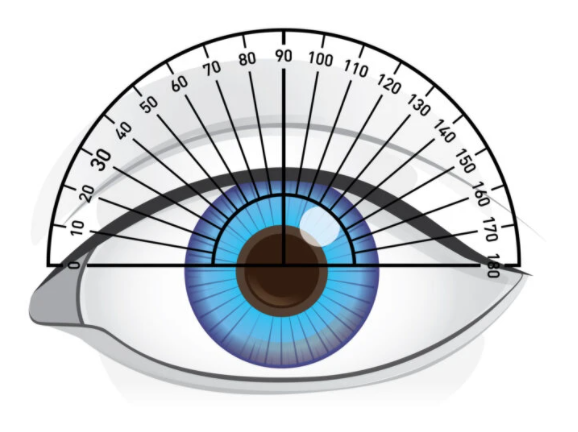The axis figure on prescription contact lenses is for people who have astigmatism and indicates the required location of cylindrical power on the lens. This determines the angle of vision correction that someone with astigmatism would need, due to the irregular curvature of their eye, which can be described as shaped like a rugby ball. Axis is part of your prescription, and tells an optometrist in which direction they must position any cylindrical power in your lenses that is required for astigmatism. The number shows the orientation or angle (in degrees) from 1 to 180. The number 90 means vertical position, and 180 horizontal. A higher number for the axis does not mean that your prescription is stronger, it simply describes the position of the astigmatism.

The axis is the lens meridian that does not contain cylinder power, defined by a number between 1 and 180 degrees. The eye doctor will determine the axis during a refraction (vision test). The number 90 represents the eye’s vertical meridian, whereas the number 180 represents the horizontal meridian.
The axis in contact lenses does not indicate the strength of an eyeglass prescription. Instead, these numbers reflect the location of any astigmatism present.
This will be helpful for opticians when an eyeglass prescription has cylinder power (CYL value). The axis value directs where to place the power in the lenses, so individuals with astigmatism can see better.
In eyeglass prescriptions, optometrists will notate both the cylinder power (strength of astigmatism correction needed) and cylinder axis. If the axis is 180 degrees, you may see it notated as x180.
Individuals with a “normal” eye axis will not see these values in their eyeglass prescriptions because they do not have astigmatism. People with a normal eye axis have strong and clear vision because the light is falling at the right place on the retina.
Consult Optometrist
Book an appointment with a Malaya Optical Optometrist today to learn more about optimum fitting and contact lens base curve. You can also visit our page for answers to your questions about vision correction with contact lenses.


